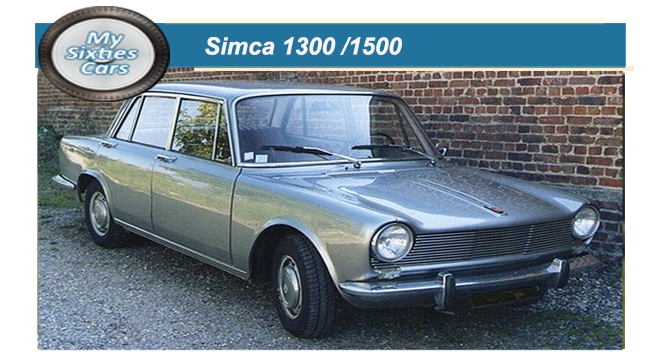
In the early Sixties, Simca were faced with the difficult task of developing a replacement for the long-running, top-selling Aronde sedan.
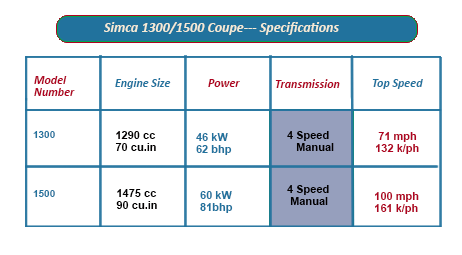 Well aware of this, Simca were prepared to take their time and invest in what it would take to find a large size saloon for the Sixties, to come in two engine sizes to be named as the 1300 and 1500.
Well aware of this, Simca were prepared to take their time and invest in what it would take to find a large size saloon for the Sixties, to come in two engine sizes to be named as the 1300 and 1500.
To design their important new model, Simca called upon the services of two of the most talented and experienced designers in Europe: veteran Italian designer Mario Ravalli di Beaumont and Rudolf Hruska, who despite being based in Vienna, Austria had gained his experience working in Italy, mostly with Alfa Romeo.
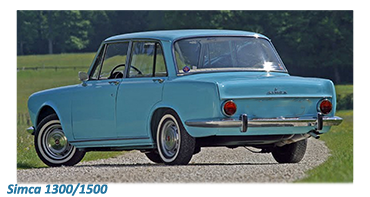 Ravalli di Beaumont and Hruska succeeded in coming up with a design for the 1300/1500 that was considered to be modern yet timeless, with a stylish body shell characterised by an extensive glass area.
Ravalli di Beaumont and Hruska succeeded in coming up with a design for the 1300/1500 that was considered to be modern yet timeless, with a stylish body shell characterised by an extensive glass area.
The Simca 1300 version was the first to go on sale- in May of 1963.
The 1300 was fitted with the same 1290 cc engine that had latterly been installed in the Aronde.
Early in 1964 the Simca 1500 was released, with a more powerful 1475 cc) engine.
Both engines were matched up to an entirely synchronised 4-speed manual gearbox with regular Simca column shift.
![]()
In late 1965 the Simca 1500 was also made available with the option of either a floor shift or even an automatic 3-speed gearbox, supplied by Borg Warner.
It took a practiced eye to spot the differences between the 1300 and 1500, which were centred around the front grille, rear bumper and the rest of the car’s chrome trimming.
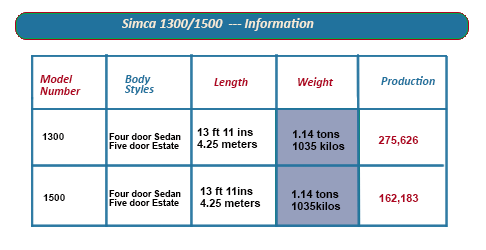 Apart from the engine and trim levels, differences between the two models were confined to radiator grille and bumpers.
Apart from the engine and trim levels, differences between the two models were confined to radiator grille and bumpers.
Late in 1965 Simca introduced an estate version of the 1300 saloon, after some delay. Simca obviously realised the limitations that an estate version with a smaller engine, and confined sales to the domestic market only.
Irrespective of their engine size, the 1300/1500 estates were very well received, thanks to their clear-cut styling, quality of overall finish and more than ample space for sitting up to six people (and their luggage) in comfort.
 <
< 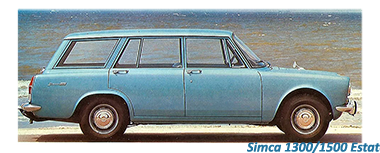 The 1500 estate could also make an excellent dual purpose with both space and power to carry a considerable amount of cargo, with the back seat folded flat.
The 1500 estate could also make an excellent dual purpose with both space and power to carry a considerable amount of cargo, with the back seat folded flat.
To make them even more flexible, the Simca 1300/1500 station wagons (or “break” as they were marketed) came in a choice of two trim levels: standard and Familial, with the latter capable of providing up to eight seating places.
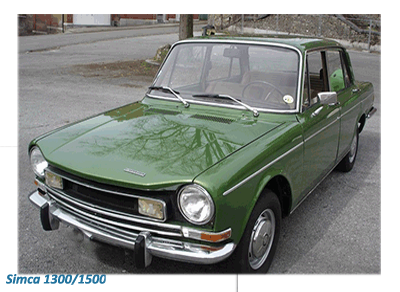 TBoth versions of the station wagons had split tailgates, while the rear windscreen could be wound down into the bottom part of the tailgate, which could be folded down flat for easier cargo access, or even converted into a picnic table in the 1500 version only.
TBoth versions of the station wagons had split tailgates, while the rear windscreen could be wound down into the bottom part of the tailgate, which could be folded down flat for easier cargo access, or even converted into a picnic table in the 1500 version only.





